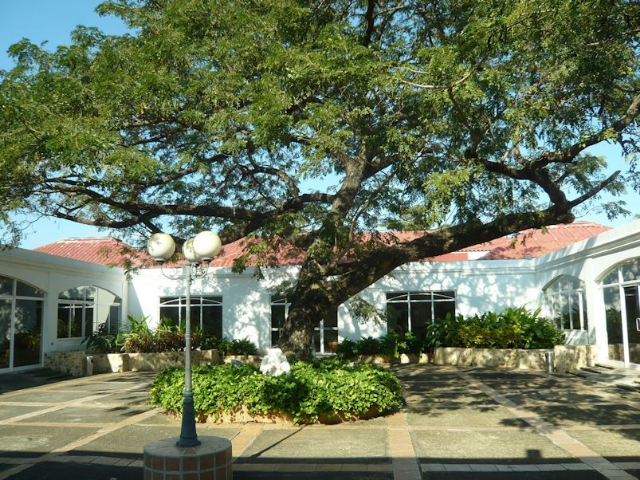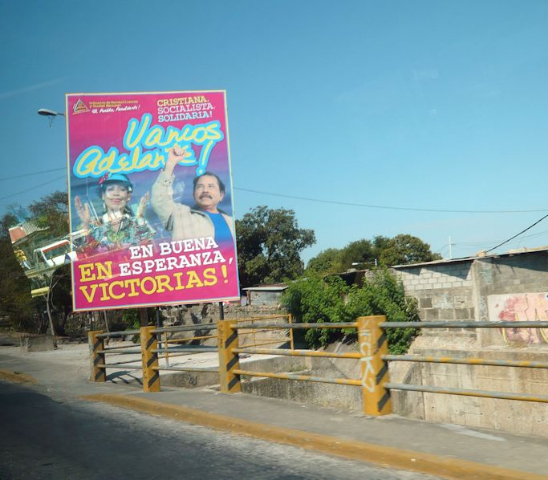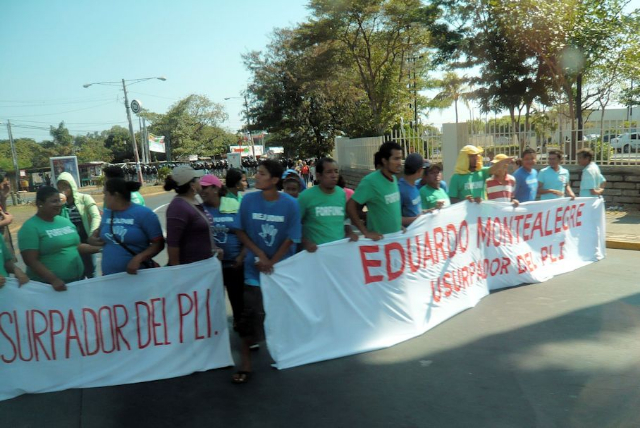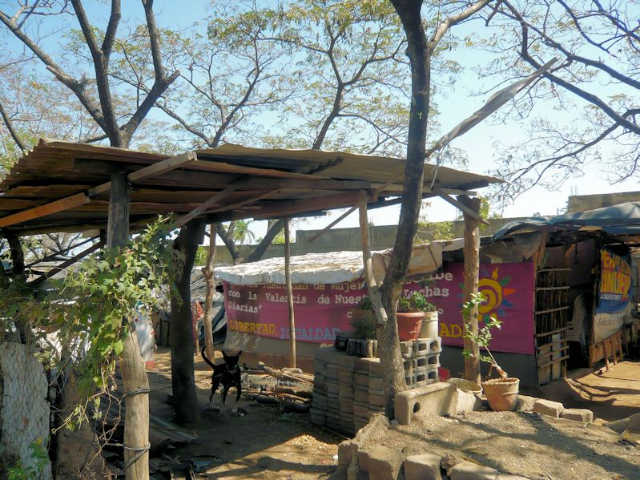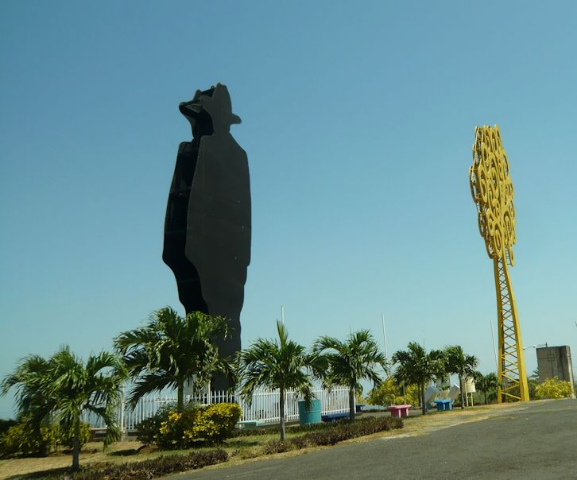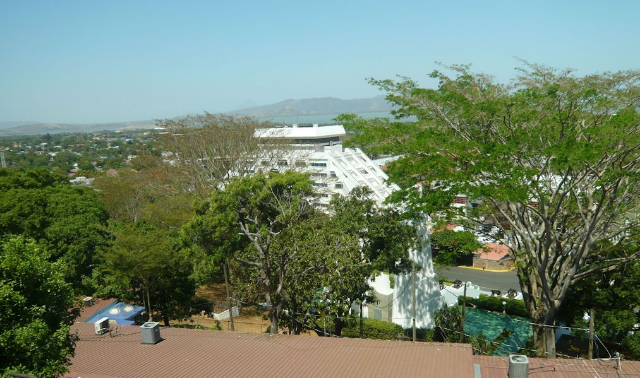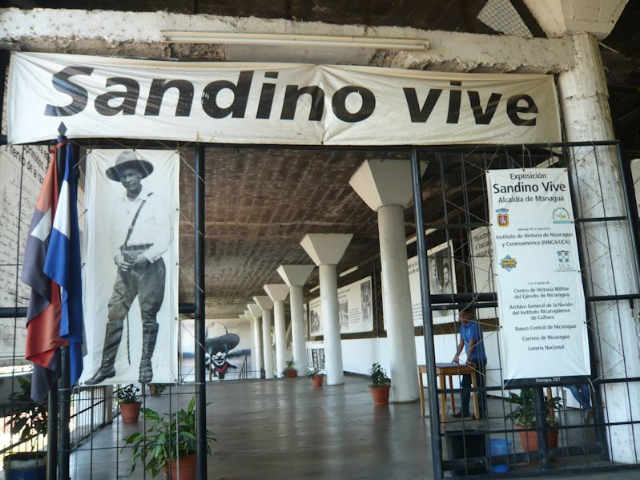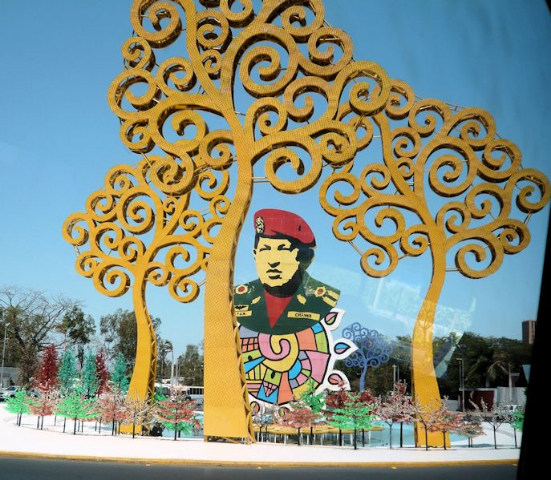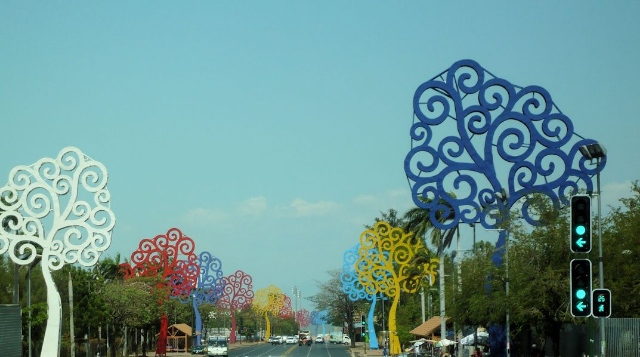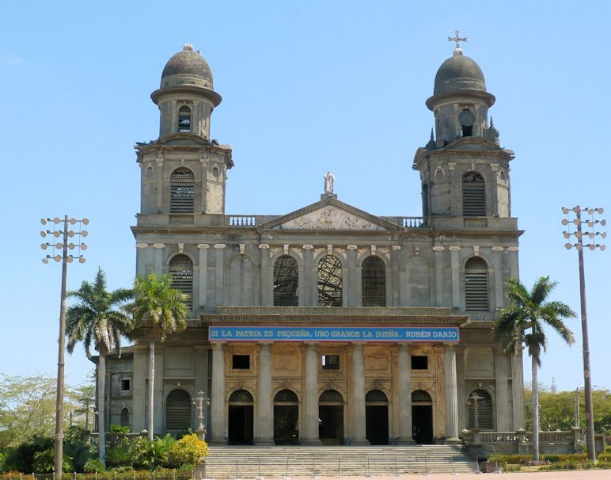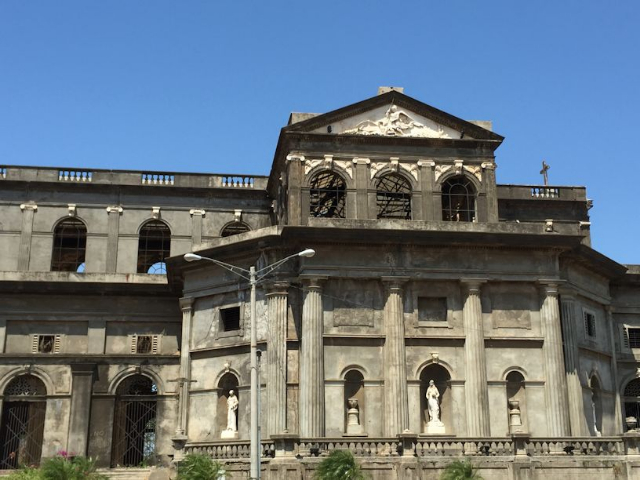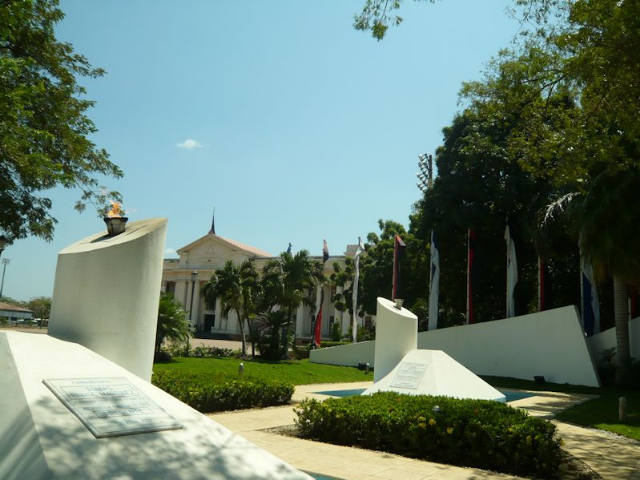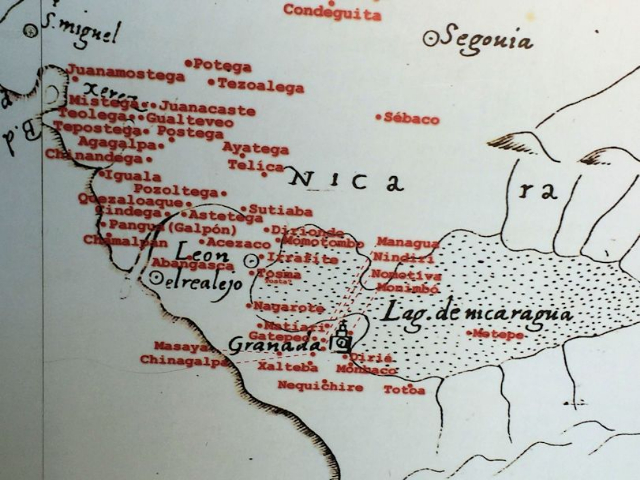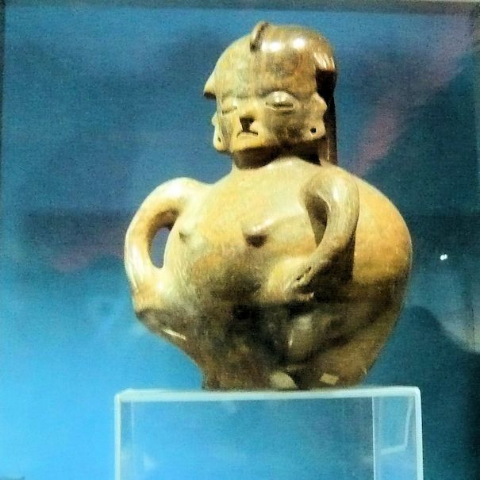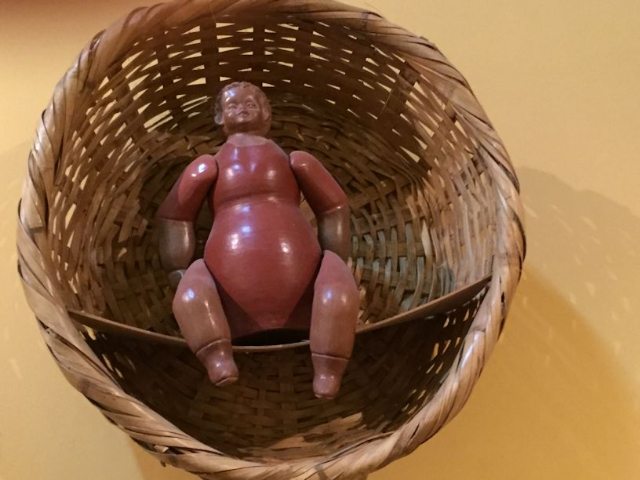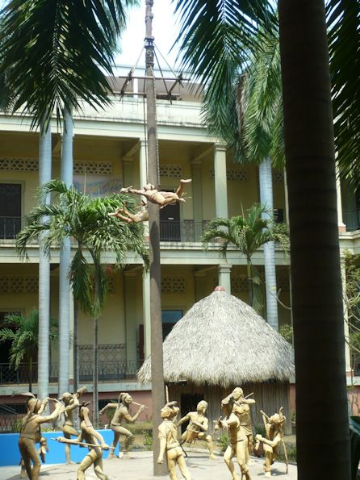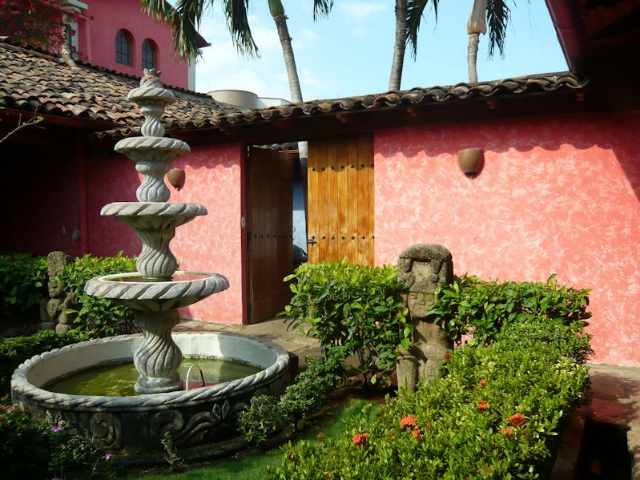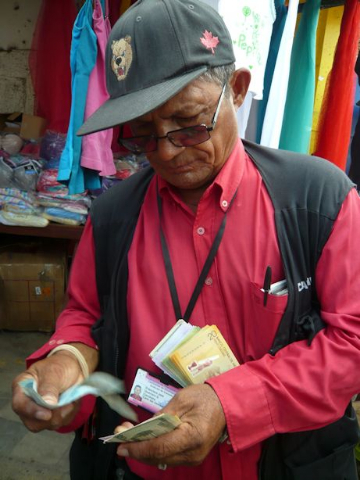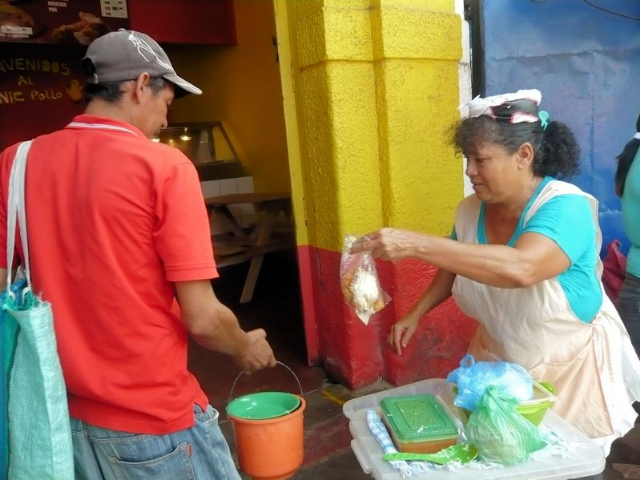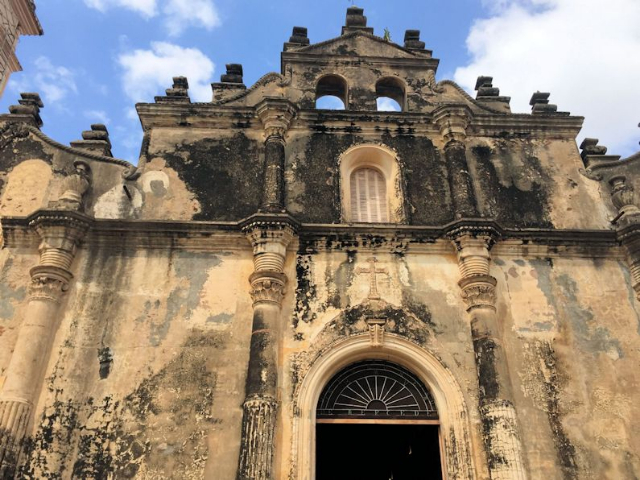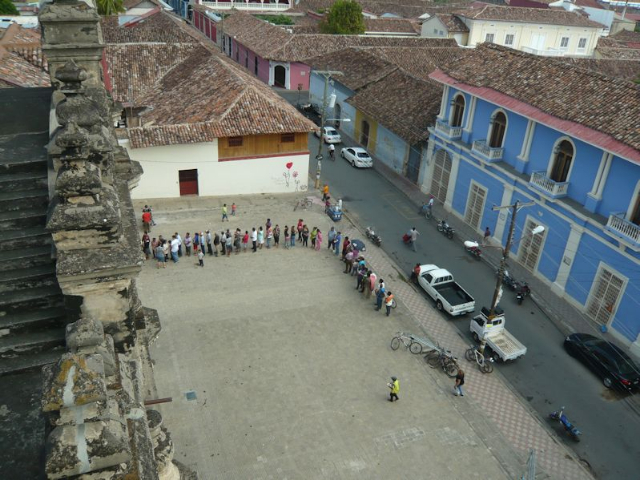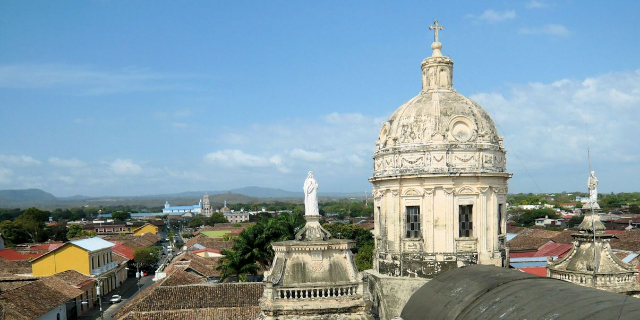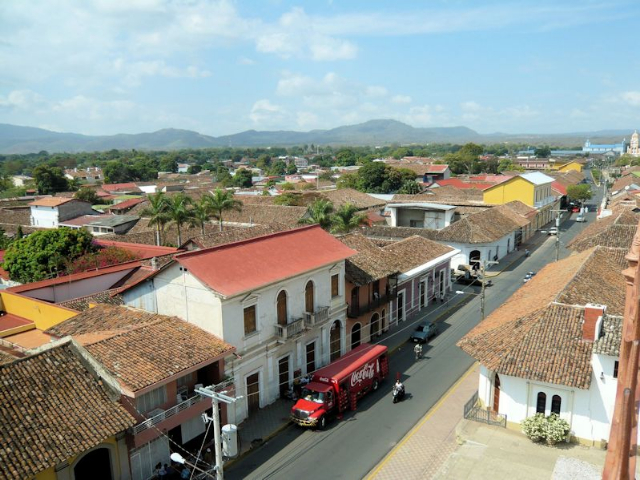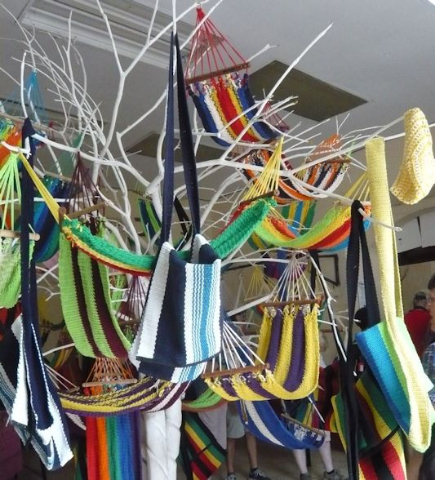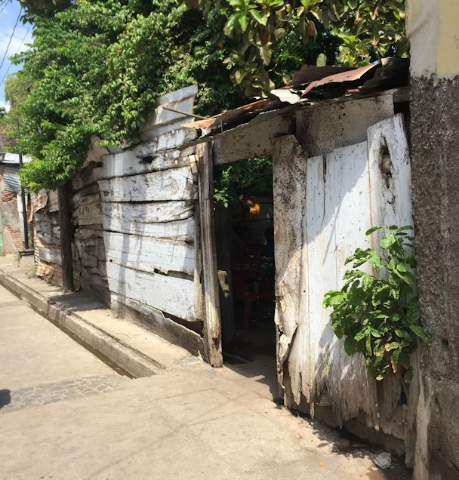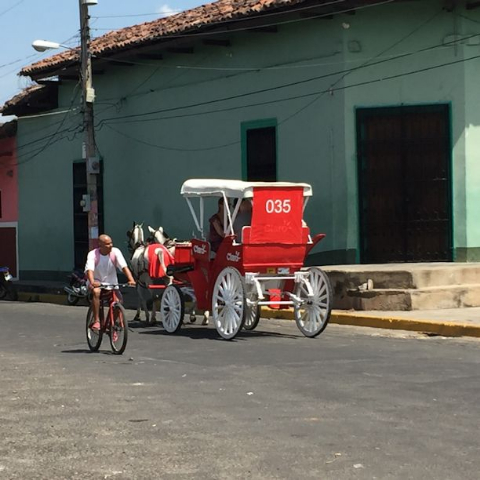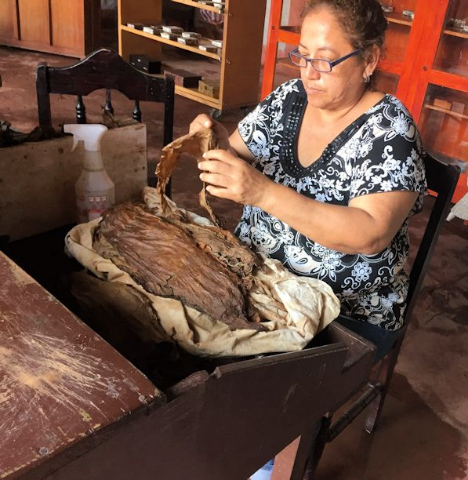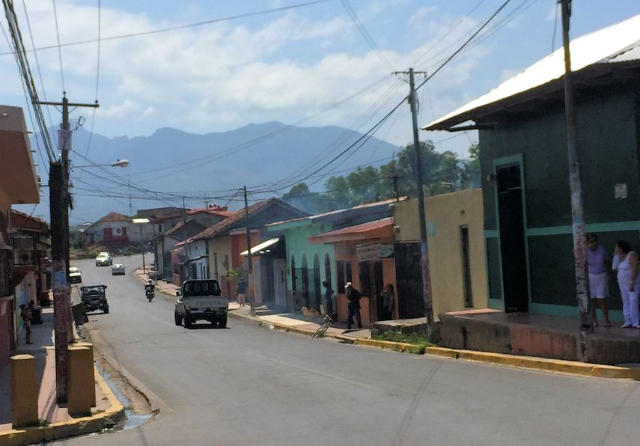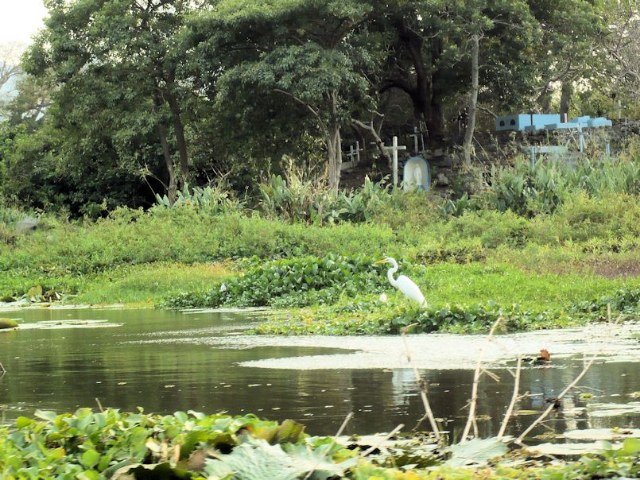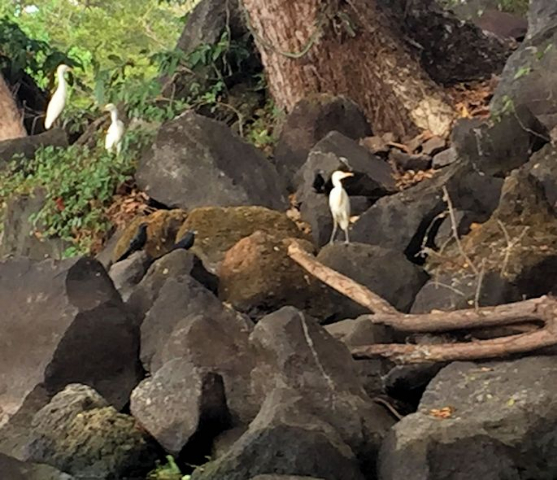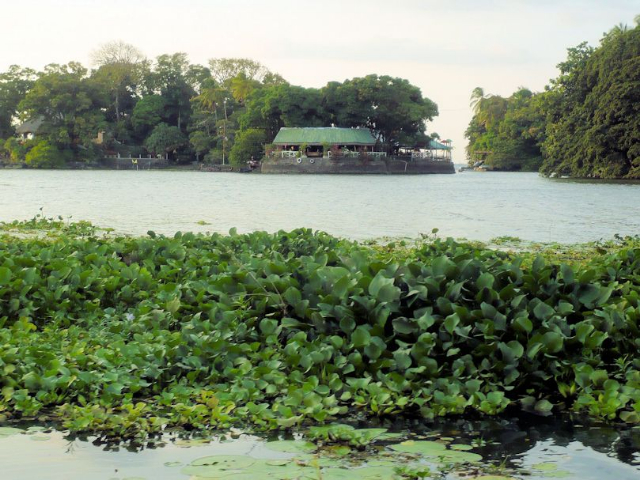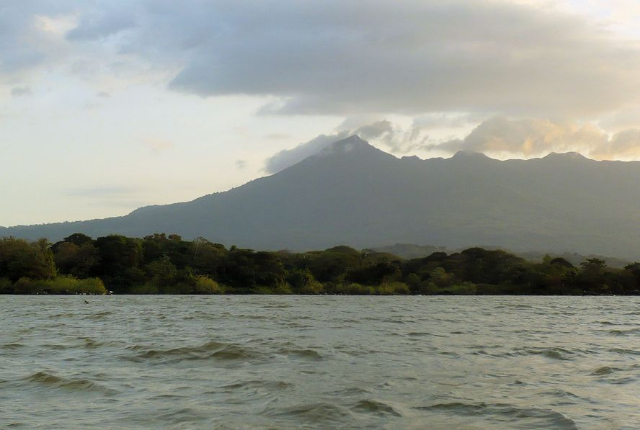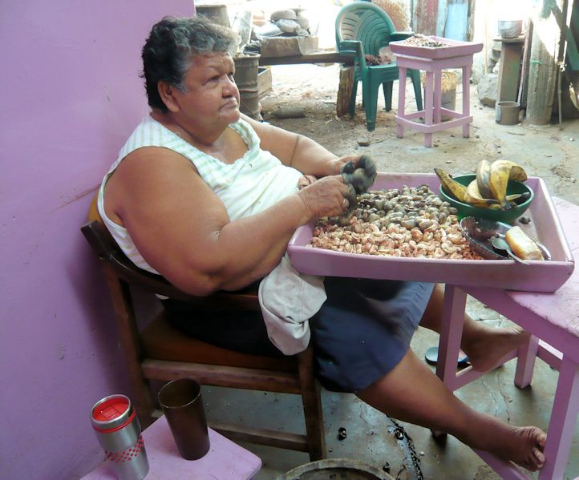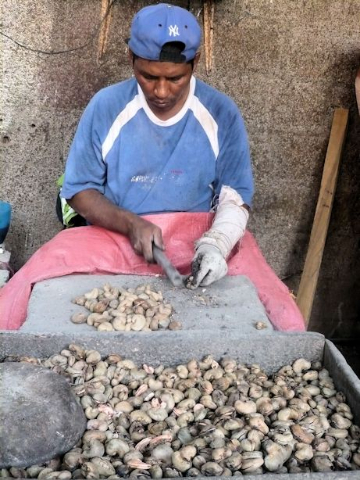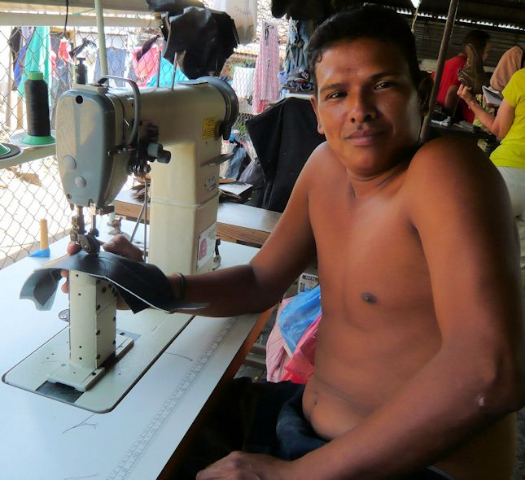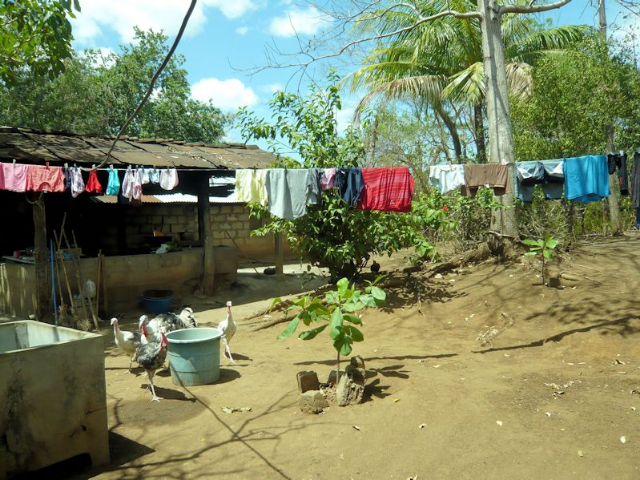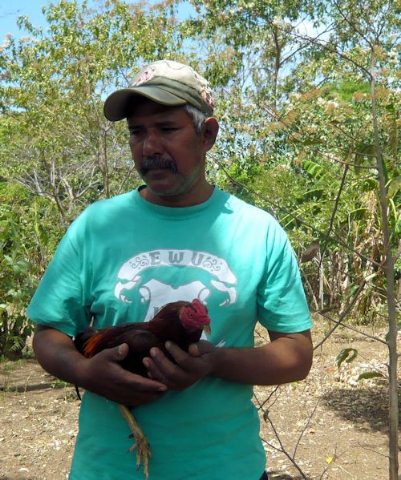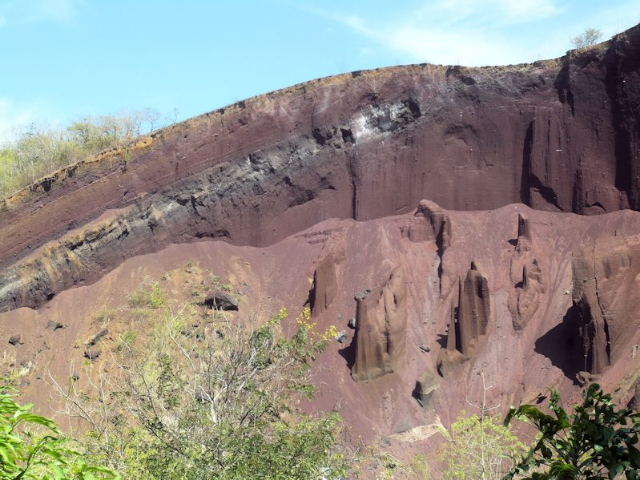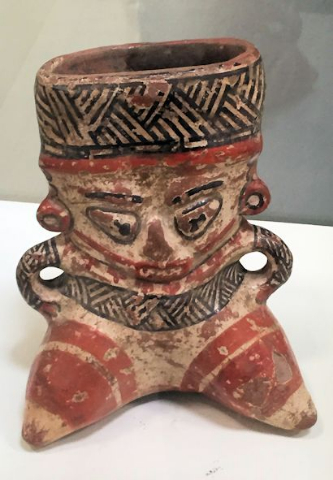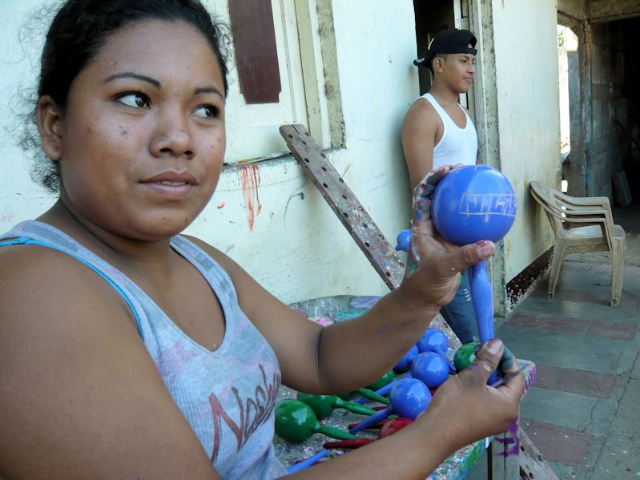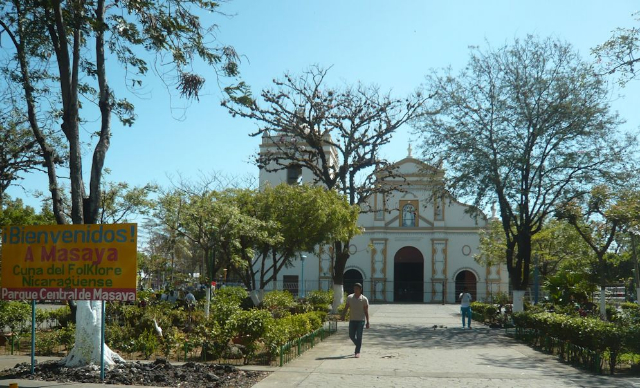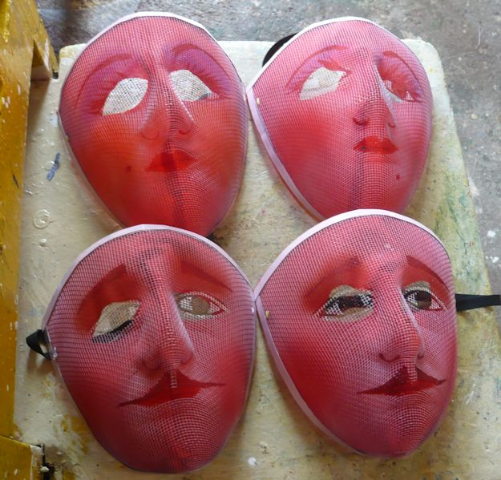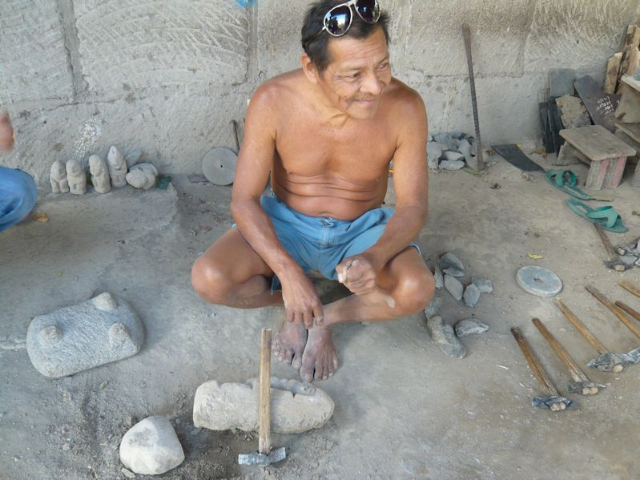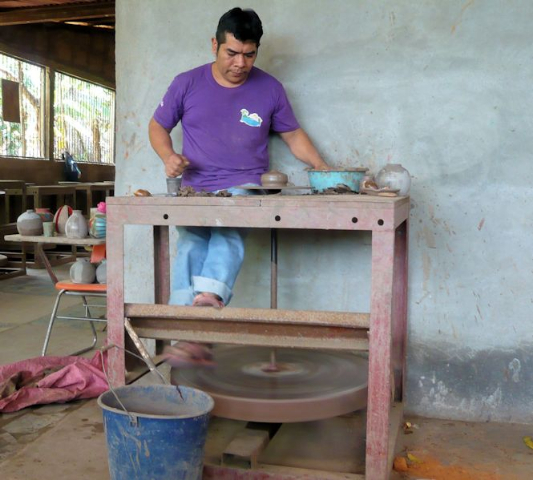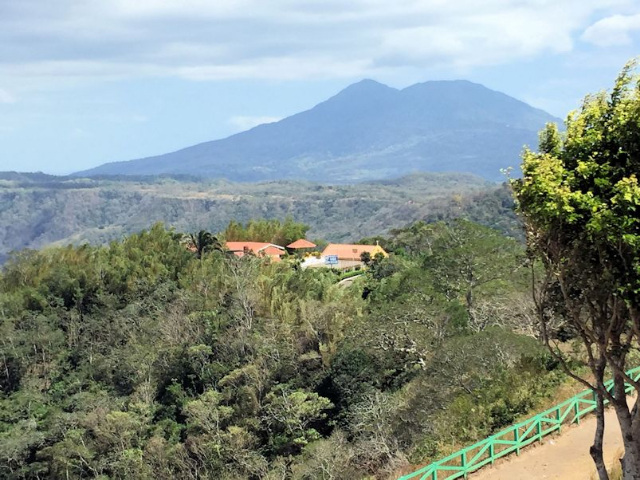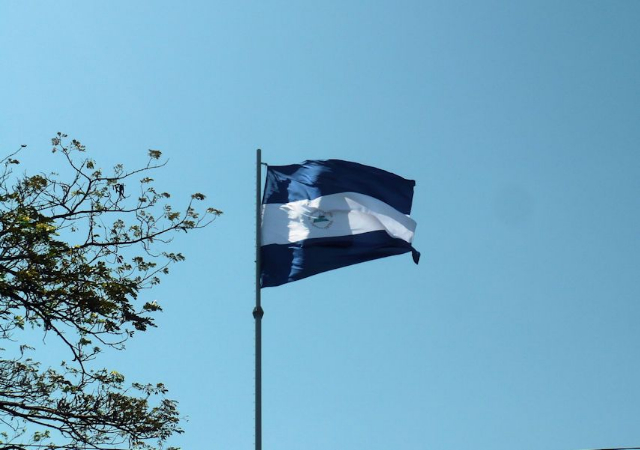Route of the Maya: Part Six
Nicaragua
By: Zeren Earls - Jun 12, 2016
Flying from Belize City to Managua via San Salvador, we began the last leg of our Central America itinerary. Due to technical problems in San Salvador, our scheduled flight was delayed by two hours for the one-hour trip to Managua, the capital city of Nicaragua. Although we landed in the late afternoon, the outside temperature read 96 degrees F. The Camino Real Managua Hotel offered a welcome respite from the hot air, with a shade tree spreading its branches over the entire width of the courtyard and a big bowl of blue and white hydrangeas on a glass table welcoming guests in the lobby.
The next morning we had a tour of Managua, which has a population of 1.4 million in the metropolitan area. The visible poverty confirmed Nicaragua’s rating as Central America’s second poorest country after Haiti. The 1972 earthquake and years of civil war in the 1980s have stunted growth. For the last four years the city has also suffered from drought, which seems to have slowed down an already slow pace of life.
This being an election year, pictures of Daniel Ortega, who has been President since 1983, and his wife, Rosario Murillo, beamed from posters mounted throughout the city. According to our guide, 70-year-old Ortega is a charismatic leader, but first lady Murillo holds power. Both have gained popularity by bringing electricity and water to the people. Elected by 38% of the vote, Ortega has increased his popularity to 64% by providing free housing to people with money from Venezuela, courtesy of Hugo Chávez, who is also a hero in Nicaragua, as evidenced by his numerous images throughout the city.
During our city tour, we came across a group of young people demonstrating against the government to attain voting rights. Although they had reached the required age of 16, they could not vote because they only had a few years of grade school education or lacked a national ID, which costs around 300 Cordoba, the equivalent of $10. Policemen in helmets formed a barricade nearby in case of trouble. Also revealing was a visit to a shanty town settled by people who had become ill working on a sugar plantation because of pesticides, such as Agent Orange, used to clear the fields. We met Carmen Ríos, leader of the opposition movement, who said that many workers suffered from kidney disease or cancer, and that they were pressing the government to ban the use of pesticides imported from the United States, which in turn imports sugar from Nicaragua.
On a hilltop with a sweeping view of Managua is Tiscapa Historical Park, home to former dictator Anastasio Somoza García’s headquarters. Somoza and his family lived and ruled from here from 1936 to 1979. Corruption within the Somoza regime hindered progress; in 1979 civil war broke out to overthrow him, leading to the rise of the Sandinista Liberation Front, a socialist political party, which memorializes its leader, Augusto Sandino, on top of the hill with a larger-than-life sculpture of him and an exhibit of his life story.
Back in the historic center, we visited the Metropolitan Cathedral, designed by Mexican architect Ricardo Legorreta and completed in 1993. It was built to serve in lieu of the Catedral Santiago, badly damaged in the 1972 earthquake. Also known as the New Cathedral, the contemporary building, dedicated to the Immaculate Conception, has a roof with 63 cupolas. Meanwhile, the damaged Old Cathedral, originally designed and shipped from Belgium in 1920, has been assessed as possible to renovate and is currently awaiting restoration. However, Nicaragua’s Catholic population, which makes up 48% of the country’s total of 6 million, has been going down, as many young people are no longer Catholic.
The National Palace of Culture, also located in the historic center, is a former government building and now serves as a monumental museum. We walked by memorials with lit torches honoring the heroes of the civil war, before reaching the entrance to the museum, which offers a great variety of exhibitions ranging from prehistoric foot prints and pre-Columbian ceramics to modern paintings and sculpture. Displays include murals by international artists, wall maps of indigenous pre-Columbian settlements, and artifacts found in excavations. In the outdoor courtyard are replicas of pole fliers around a cacao tree – an aerial dance to show gratitude for a good harvest.
Following a lunch of sea bass with fried plantains, coconut flan, and a hibiscus drink, we departed for Granada, passing by Masaya National Park with an active volcano in the distance, too dangerous to approach. The Hotel Casa del Consulado, a charming 9-room hacienda with a fountain in the courtyard in Granada’s historic section, was our home for four nights. During an orientation walk to the central square, we walked through a park where young people gathered under a tree for access to free wifi provided by the municipality. Money exchange on the street was brisk, as many expatriates from the US are in the city. We stopped for ice cream to cool off from the heat, which sapped the energy from anyone reluctant to slow down.
The next morning our walking tour began at the market, which is open from 5 am to 5 pm everyday of the year. Farmers bring produce by trucks to vendors, who attract shoppers by offering the freshest produce at the cheapest price. We walked through crowded narrow alleys lined with vegetables, fruit, fresh and fried fish, and a variety of grains and spices. In the intense heat butcher shops offered heaps of meat without the aid of any refrigeration or packed ice. People bought quinine, not as a remedy for malaria, but to cleanse their digestive systems.
Afterwards we climbed up the narrow winding steps of the Merced Church to reach its tower for a 360-degree view of the colonial city. Named after the Spanish city of the same name, Granada is the oldest colonial city on the American mainland, established in 1524. Colonnaded houses with balconies and red brick roofs along with other church domes and towers stretched ahead to the surrounding mountains. Meanwhile, a long line of people down below waited their turn for a check-up by an ophthalmologist, expenses covered by the Lions Club.
We stopped at a nearby workshop where youth with disabilities learned weaving skills. They wove colorful shawls, hats, and bags in addition to hammocks large and small, bassinets, shirts, and similar items for sale. A large tree in the middle of the shop arrested visitors’ attention with an assortment of woven bags and hammocks stretched between its dry branches.
The hardships people endured to earn a living unrolled before us during a visit to a brothel. An extended family of four, each living in a single room facing a courtyard, rented rooms to be used as a brothel. We met a woman who had come from Azerbaijan via Moscow when she was 16, as her family had fled the war in her country. Along the way she had been separated from her family and had never found them again. In order to survive, she had worked as a prostitute ever since. In her 30 s, she had two school-age children, who were cared for by neighbors while they were young. She lived two hours away and left home at 5 am to be at work by 7. Her children knew what she did for a living.
Tobacco is a big export business in Nicaragua, which is said to have surpassed Cuba in the quality of its hand-rolled cigars. At a tobacco shop we attended a demonstration on tobacco from seedling to cigar, before returning to the hotel for some rest.
In the late afternoon we took a horse-drawn carriage to a boat dock for a ride around Lake Nicaragua, which is also called Lago Cocibolca and is the tenth-largest body of fresh water in the world. As we cruised, volcanic mountains in the distance framed our scenery of graceful shorebirds, fishermen on the water, and homes of the wealthy and the poor on various islets. Following a dramatic sunset that silhouetted the trees and mountains against the sky, we returned to the city for dinner.
The next morning’s visit was to a barrio at the edge of the city. A cashew house run by a woman in her 70 s was our first stop. Cashews belong to the poison ivy family and therefore require special handling. We watched the owner, who, wearing protective finger gloves, shelled nuts already cracked by one of the hired hands, who worked 7-11 am. The nuts were then roasted and skinned. The owner’s granddaughter had interrupted her university education to keep her yaya’s (grandmother’s) business alive. She helped with the final sorting of whole and broken nuts. One bowl of cashews sold for about $5; the business made $40 a day, from which the small number of workers was paid. I had visited a cashew processing plant in Thailand some years ago, and the contrast I observed in Nicaragua was heart-wrenching.
Afterwards we watched men at a small shoe workshop cut, stitch, and mold leather into shoes before they were polished black, earmarked for schools. The government distributes up to one million shoes annually to school children for free. Most of the exported shoes go to Costa Rica; Nicaragua no longer imports shoes from China.
Piñata House, where people with special needs work, was started by a former army officer who used to be in charge of training soldiers to shoot. The man’s realization while in active duty that the army was a refuge for poor people had led him and his wife to start a piñata business, which sold directly to consumers. Here young people made piñatas using the same mold over and over, unable to handle a change of ideas. Piñatas of clowns and animals hung everywhere.
A visit to a farming cooperative introduced us to the everyday life of country people, thanks to a Spanish NGO, which has helped form an association of cooperatives to encourage ecotourism. Living on small 14-hectare organic farms, 40 men and women benefit by sharing the money left over after maintenance costs. Many supplement their income by breeding horses, fighting cocks, or providing home-cooked meals to visitors. We visited one of the farms, where pigs, turkeys, fighting cocks, and ducks roamed the grounds near the farmhouse, where lunch was prepared for us over an open fire. We enjoyed a stew of shredded chicken, mashed corn, onions, sweet peppers, and mint leaves served over rice, with red beans and fried plantains on the side. A passion fruit drink with cinnamon and cloves and chiote leche, a candy-like dessert, completed the menu. Bidding goodbye to our hosts, we returned to Granada.
On the way back we passed by a huge mound of red volcanic soil, sculpted by erosion, against a backdrop of black ash, marked at the center with a wide band of white magnesium – an impressive tableau of nature’s wonder at work.
In the afternoon I enjoyed my free time at the Museum of Archaeology, which highlights the native cultures of Pacific Nicaragua, which arrived from Central Mexico in about 1250 AD. Of special interest were small painted clay figurines with different hairstyles and headdresses to characterize status; jaguar vessels with heads and legs used to drink a prestigious beverage, such as cacao; and ceramics decorated with bold colors and intricate iconography.
In the evening we watched a procession headed by a replica of Jesus carrying the Cross on his shoulder. Starting in front of the Merced Church at 6 pm to the accompaniment of live music, the procession moved through the 14 Stations of the Cross – pre-designated houses or shops blessed by the leading priest. Attracting a large number of followers as it moved, the procession disappeared into the night as we watched. The event is repeated on the four Fridays leading up to Holy Week.
The next morning we left for Masaya, Nicaragua’s folklore center. We visited a family whose business was making maracas out of gourds, producing 1000 maracas per day. The process involves drilling a hole in the gourd to clear out the seeds; after drying over a fire, the gourds are peeled and filled with volcanic rock, and sealed by attaching a handle. The maracas are then painted and, once the paint is dry, etched with a design. We each bought personalized maracas at $1 apiece.
We spent the rest of the day visiting other artisans in the vicinity of Catarina, where we had lunch. One woman made wire festival masks, inspired by the Sandinista revolutionaries, who used to cover their faces below the eyes with bandanas for disguise from the National Guard. Mr. Lopez, a stone carver, brought volcanic rock on his shoulder from a quarry 2 km away to sculpt figures inspired by pre-Columbian statuary. At the ceramic studio we watched a potter at the kick wheel and his son as he etched surface designs on the pots. All these talented people lived at the edge of poverty, with the stone carver being the poorest, as his is a dying art.
The last adventure of the day was to the Mombacho Volcano Natural Reserve. Following narrow trails flanked by trees and flowering shrubs, we ascended the forest through the clouds, where it was cool and misty. Bundled up in my windbreaker, with the hood tightly secured, I was enveloped by clouds while viewing the grandeur of the surrounding mountains and Crater Lake below.
Beautiful Nicaragua is a resourceful country with talented people, yet to realize its potential. Colombia and the US are its biggest investors. Walmart owns all the supermarkets under a different name. Hopes are high because of a planned new canal, to connect the Pacific through the rain forest to the Atlantic, ending on the south side at Punta Gorda. Under Australian leadership, the canal, which will be twice as wide as the Panama Canal, is expected to bring some prosperity to the country with the addition of another international airport, duty-free shops, and hotels. There are currently 10,000 more Nicaraguan scientists in the US than in Nicaragua itself; hopes are high that the new canal will attract them back. These hopes are illustrated in the Nicaraguan flag, which consists of two blue bands, for the Atlantic and Pacific Oceans, flanking a white band, representing the country, with a green triangle at the center, symbolizing equality for all the people.
Glad to have added Nicaragua to my Route of the Maya itinerary and feeling ready to return home, I bid goodbye to my travel companions and flew back to San Salvador. From here I flew to Managua and from there to Miami, to connect to my Boston flight, thus ending a month-long journey.


